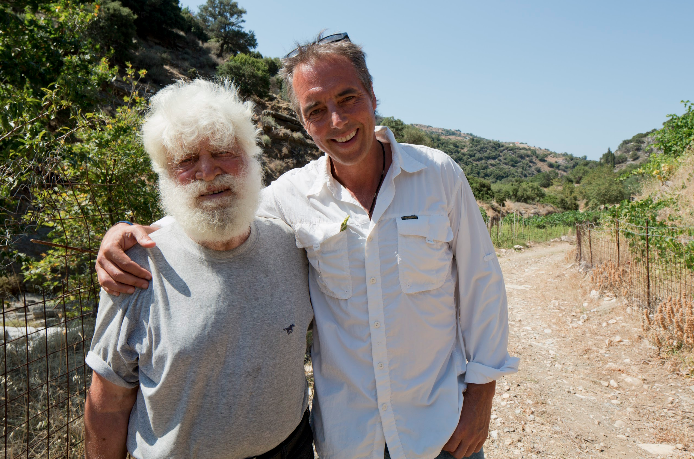This year’s batch of graduates will get some of their final dose of collegiate advice from a St. Thomas alumnus who has discovered the secrets of pockets of the planet where people reach the age of 100 at ten times the rate of people in the United States.
Dan Buettner is the creator of Blue Zones—a concept which identifies the characteristics of the healthiest places on the planet and applies them to locations in the United States.
The concept for the project began when Buettner partnered with National Geographic and travelled to Ikaria, Greece; Loma Linda, California; Sardinia, Italy; Okinawa, Japan and Nicoya, Costa Rica, where he found high numbers of centenarians He gathered information about healthy lifestyle characteristics that could explain longevity, and then founded the first Blue Zone in the U.S. in 2009.

“Most of what I do, whether it’s in writing books or transforming cities … it’s really just taking wisdom that has evolved over centuries and applying it to modern-day America,” Buettner said.
Participants at Blue Zones’ location in Albert Lea, Minnesota have collectively lost 12,000 pounds, lowered healthcare costs and added more than three years of average life expectancy, according to the Blue Zones website.
Since the Albert Lea project, Buettner has created Blue Zones in three California cities and transformed the state of Iowa which is, with the help of Blue Zones, aiming to become the healthiest state in the U.S. by 2016.
According to Buettner, it’s possible for college students to adopt some of the Blue Zone aspects into their lifestyles, especially if it’s a group effort.
“Health behaviors are contagious,” he said.
Freshman Emily Heimerman said she thinks the idea of Blue Zones is one that appeals to a lot of people.
“I think that everybody has an inner desire to get fit and healthy,” Heimerman said.
Buettner said that being active is an important part and that college students who live on campus remain active by walking or biking daily.
He said reducing meat in one’s diet has great health benefits, as well.
“(If) people are only eating about two ounces of meat a day and are eating mostly plant based, complex carbohydrate foods like beans … these are all things I think would have a big impact,” Buettner said.
Senior Laura Rosno said she thinks the Blue Zones concept is a good message to spread.
“Not just (in) America but all over, we’re starting to struggle with how to be healthy and how to find time to be healthy,” Rosno said. “So if you can find ways to express that to people who tend to have a workaholic type life or people who live on a college campus and have to eat college food, that’s something that I’d definitely be interested in.”
Madonna McDermott, director of Health Services and the Wellness Center, said St. Thomas employs some of the Blue Zones program’s aspects.
She said having the tobacco ban, a faith-based community, fresh produce at The View, cooking classes and fitness services at the Anderson Athletic and Recreation Center are some of the ways St. Thomas promotes healthy living.
“The resources are at our fingertips,” McDermott said. “We all have innate health–cultivate it.”
Buettner said students can achieve success in their own projects by thinking big and learning how to articulate their ideas with excitement.
“Don’t take no for an answer,” Buettner said. “For every nine people who will be able to tell you why you can’t do something, there’s one person who’s going to tell you why you can.”
Jamie Bernard can be reached at bern2479@stthomas.edu.

